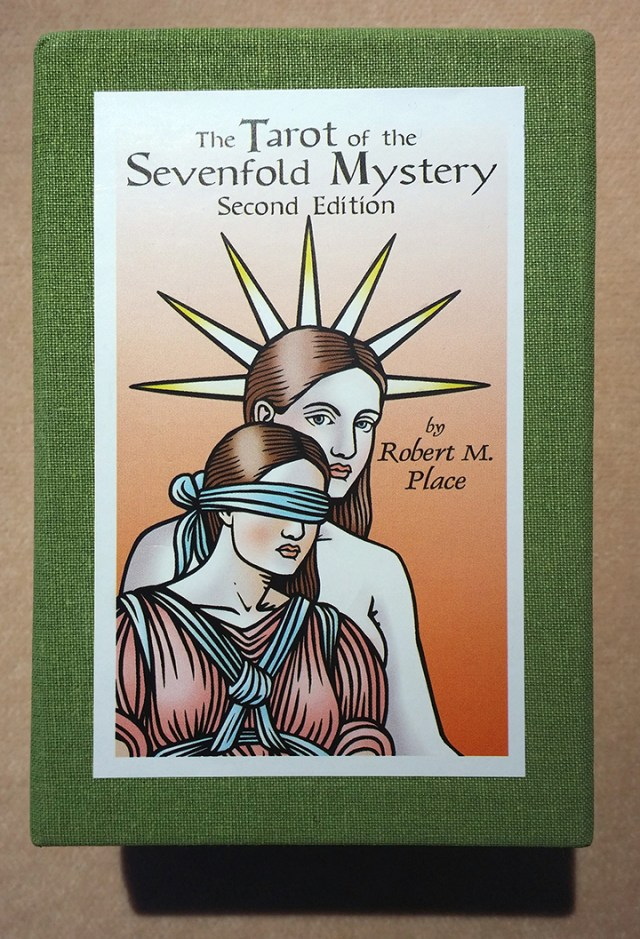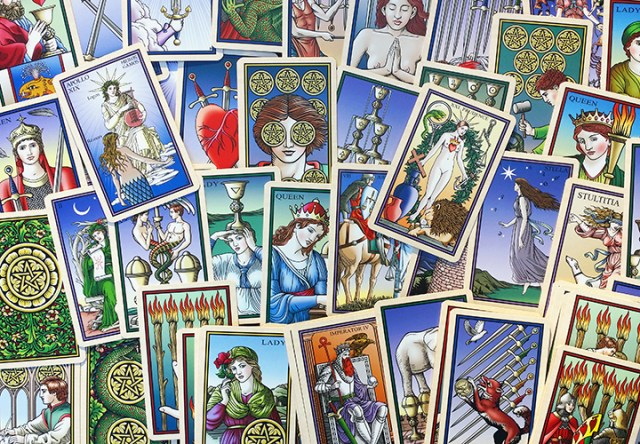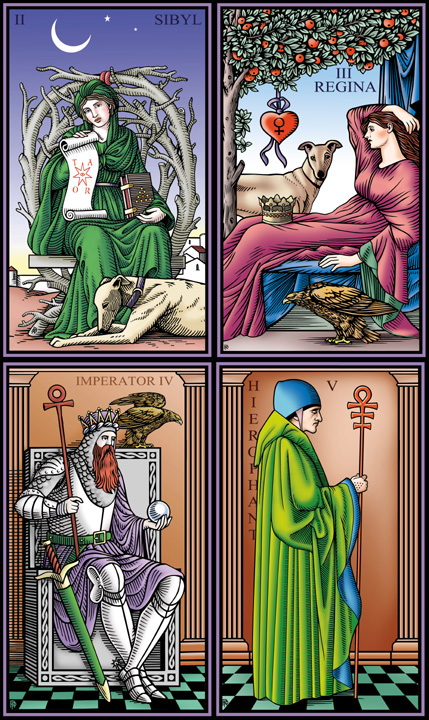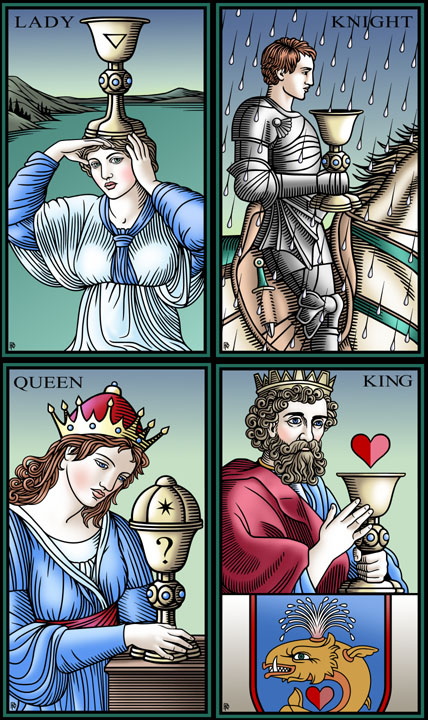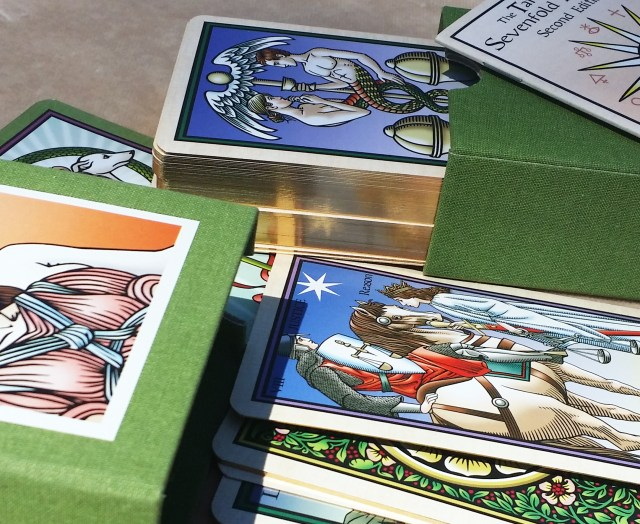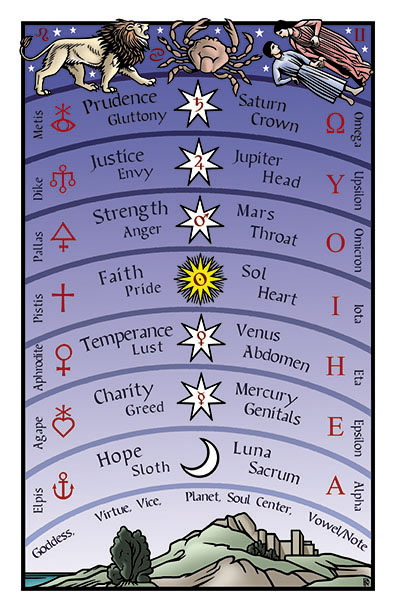塔羅牌 > 獨立作家及限量版
The Tarot Of The Sevenfold Mystery - 2nd Edition
作者 : Robert M. Place出版社/廠商 : Self-Publish
價格: $880 HKD
VIP會員價格: $792 HKD
[如何成為 VIP]
貨品編號: 11518
貨品介紹:
本產品需要付全數訂金訂貨,一般需時約 2-4 星期到貨。The Tarot of the Sevenfold Mystery expresses the transcendental philosophy that is linked to the origin of the Tarot. It illustrates the ancient Western systems of the three soul levels and seven soul centers that function as steps on a mystical ladder of ascent to higher consciousness. It can be read on many levels, from the mundane to the spiritual, it is a source of inner wisdom and advise, and can uncover the longings of the soul. This new second edition has:
- Gold edged cards
- And comes in a cloth covered box with a slipcase
Details about the deck:
Burne-Jones based his tall female “stunners” and melancholy heroes on the paintings of Botticelli (1445-1510) and Michelangelo (1475-1564), two artists whose works are considered primary examples of Renaissance Neoplatonic mysticism. His work expresses the Renaissance ideal that physical beauty and spiritual beauty are linked in one continuum that can lead to the mystical experience of beauty itself, as a timeless, underlying reality. Plato (428/7-348/7 BC) described this reality as a radiant light that is the true food of the soul. He said that this light is made of the true essence of Virtue, a higher quality of Virtue, beyond mere codes of behavior. In the Renaissance, artists, like Botticelli, symbolized this spiritual essence as an ideal female nude and it is this ideal that allowed early Tarot artists to place a nude on the World card as a symbol of the primary beauty.
Because Burne-Jones was inspired by the beauty and symbolism of the fifteenth century (the century in which the Tarot was created) it is not surprising that he painted many of the same themes that we find in the Tarot, such as Temperance, Lovers, and the Wheel of Fortune. It seemed to me that he was creating a Tarot but he never finished it. I started this deck with a desire to finish Burne-Jones’s Tarot for him. I wanted to see what a deck would look like if it were done in his style and with his sense of sensuality and symbolism. I also realized that it would express the Neoplatonic ideal that I believed was expressed in the Tarot from its origin. By proceeding with this intent, this deck became a bridge between the art and occult symbolism of the nineteenth century and the iconography and mystical philosophy of the fifteenth century. It shows that they are both rooted in the perennial mystery that is like a golden thread running through Western History.
Neoplatonic Symbolism
In Neoplatonic mysticism, numbers are used as symbols and the numbers three and seven are of primary importance. As testament to its Neoplatonic origin, the Tarot has a fifth suit composed of an unnumbered Fool and three times seven trumps. The sixth century BC philosopher, Pythagoras, was said to have theorized that there are three kinds of people, each characterized by their level of spiritual development: those who love profit, those who love fame, and those who love wisdom. Plato continued this idea by stating that each person has three souls: the Sole of Appetite, the Soul of Will, and the Soul of Reason, which he symbolized as a chariot with two winged horses and a driver.
These three represented a spiritual hierarchy and as individuals developed and balanced each through the practice of virtue they were able to advance spiritually and operate at a higher soul level. The keys to spiritual advancement were the Cardinal Virtues. Plato and later philosophers assigned three virtues, one to each of the soul levels, and these are the same three that are depicted in the Tarot: Temperance to the Soul of Appetite, Strength to the Soul of Will, and Justice to the Soul of Reason. If we divide the twenty-one trumps into three groups of seven we find the theme of each group corresponds sequentially to the three soul levels and the sequence also depicts the three virtues that are necessary to bring them into balance.
In Plato’s theory the complete set of Cardinal Virtues contained a forth called Prudence. In the late Middle Ages and Renaissance, philosophers theorized that the forth virtue. Prudence, contained the other three. So that Temperance, Strength, and Justice were the three virtues necessary to develop the totality that was Prudence. In this view, Prudence represented not just wisdom but a mystical state of enlightenment that was reached when the lesser three virtues brought the soul levels into balance and health. In the Tarot, Prudence is represented by the Wold card, which represents Prudence as a Botticelli-like beautiful nude. Philosophers equated her with the Soul of the World, which helps to explain the title of the trump. Her Christian counterpart was Sophia, the wisdom of God, who was said to be the mother of the three Christian virtues: Faith, Hope, and Charity. With these three the total number of virtues is brought up to seven and this is the sevenfold mystery.
The importance of the number seven was derived from its role in ancient cosmology. From the ancient world until the late Renaissance, the Earth was believed to be the unmoving center of the universe and the fixed stars, formed into constellations, revolved around the Earth from east to west. Between the fixed stars and the Earth, there were believed to be a series of seven crystal spheres, forming seven layers each one closer to the stars as they ascended. On each sphere the ancients placed a planet that orbited independently from the fixed stars. When the sky is viewed with the naked eye, the planets are the only celestial objects that seem to do this. The planets were each named after a god; from the bottom up, they were: Luna, Mercury, Venus, Sol, Mars, Jupiter, and Saturn. The planets were, also, believed to from a ladder between Heaven and Earth that the soul would descend at birth and at each planet the soul was given certain qualities by the god of the planet. These qualities are the source of the lists or seven virtues and seven vices.
The seven planets were thought of as the soul centers of the cosmos and corresponding soul centers could be found ascending the spine, from the sacrum to the crown of the head, in the microcosm of the human body. Pythagoras developed the diatonic music scale with seven notes to capture the sound that each planet made as it orbited the Earth. This was called the music of the spheres. He marked each note with one of the seven vowels of the Greek alphabet and through a musical treatment used this scale to bring the human soul centers into harmony with the planets. These notes functioned as virtues meant to heal each soul center. Later, lists of seven virtues meant to cure seven vices-each associated with a soul center-began to appear in Hermetic, Gnostic, and mystical Christian philosophy. I believe that the Tarot’s trumps depict Virtue driving an ascent through the seven soul centers depicted repeatedly on three levels, corresponding to the three Platonic soul levels. The final achievement of this ascent is illustrated on the Soul of the World card, which depicts Prudence/Sophia as the light of higher consciousness and the true food of the soul.
The minor suits in The Tarot of the Sevenfold Mystery related to the four elements and the pips and courts are similar in meaning to the same cards in The Alchemical Tarot.
The Design for the Back of the Cards - The Staff of Serapis
Serapis was the principle god of the mystery religion that dominated Hellenistic Egypt. He was a combination of the Egyptian Osiris and the Apis bull. The Hellenistic Egyptians equated him with the Greek Hades and they provided Serapis with a three-headed dog like Cerberus. The three heads of the Egyptian hound were transformed into the head of a wolf, a lion, and a dog, representing the past, present, and future.
In the 15th century, this image was introduced to Renaissance artists and philosophers. They equated the image with Prudence, who in the Middle Ages and Renaissance was often depicted with three heads to represent the three lesser virtues that were her parts. They also made it a symbol of Apollo instead of Serapis, who was less well known to them. Besides the past, present, and future, they said that the three heads represented the three aspects of the Platonic soul as well as memory, intelligence, and foresight. The Wolf as a symbol of appetite devours the past like memory, the lion as a symbol of courage and will dominates the present with his intelligence and action, and the dog as a symbol of reason and virtue creates a better future through his prudence and optimistic hope. As a symbol of Prudence and the three Platonic souls it relates well to my theory of the symbolism of the trumps and shows how this theme was commonly expressed in the iconography of the Renaissance.
產品出版地: 美國
容量/重量/尺寸: 78 cards, 2.75" x 4.75"
價格: $880 HKD
VIP會員價格: $792 HKD
[如何成為 VIP]
